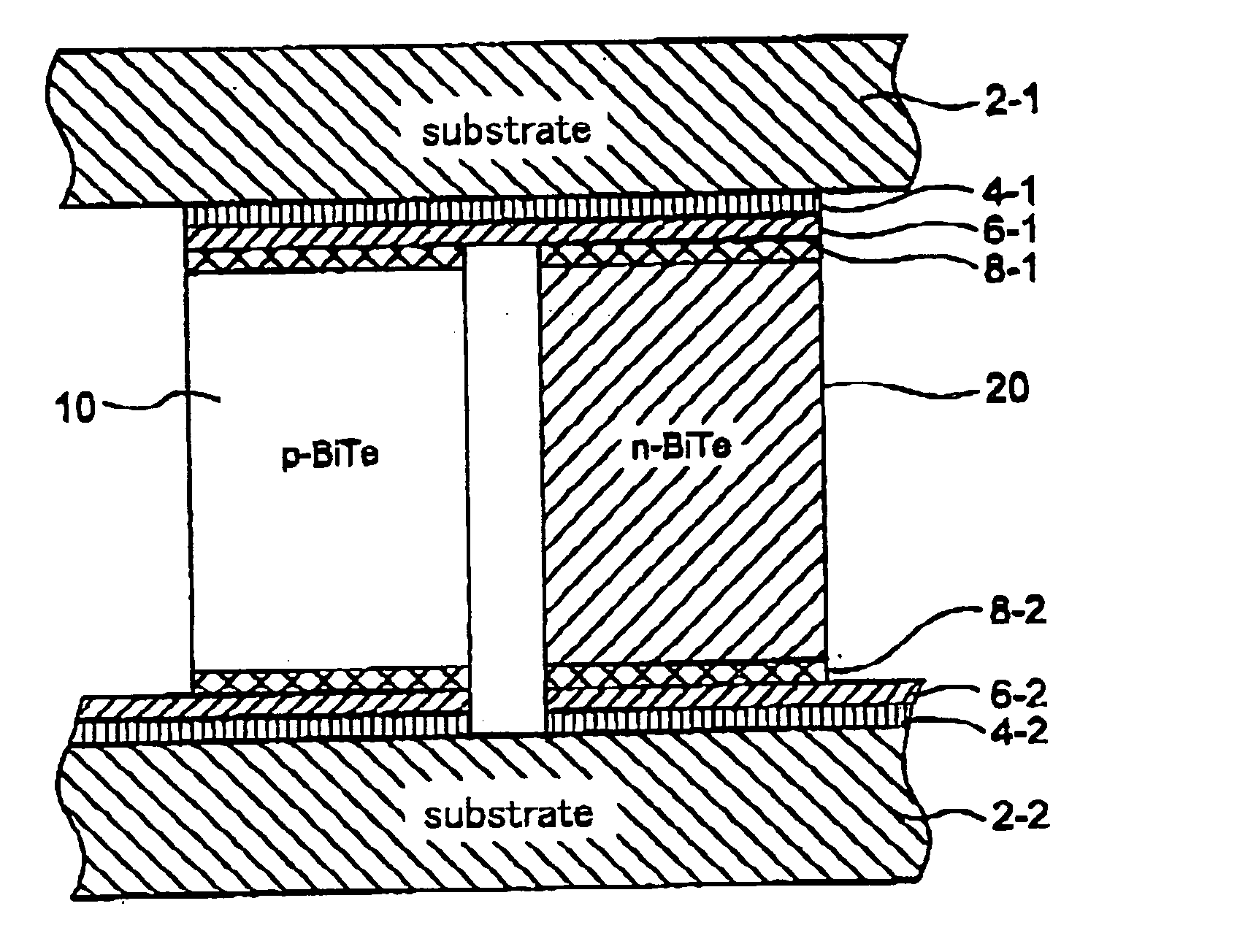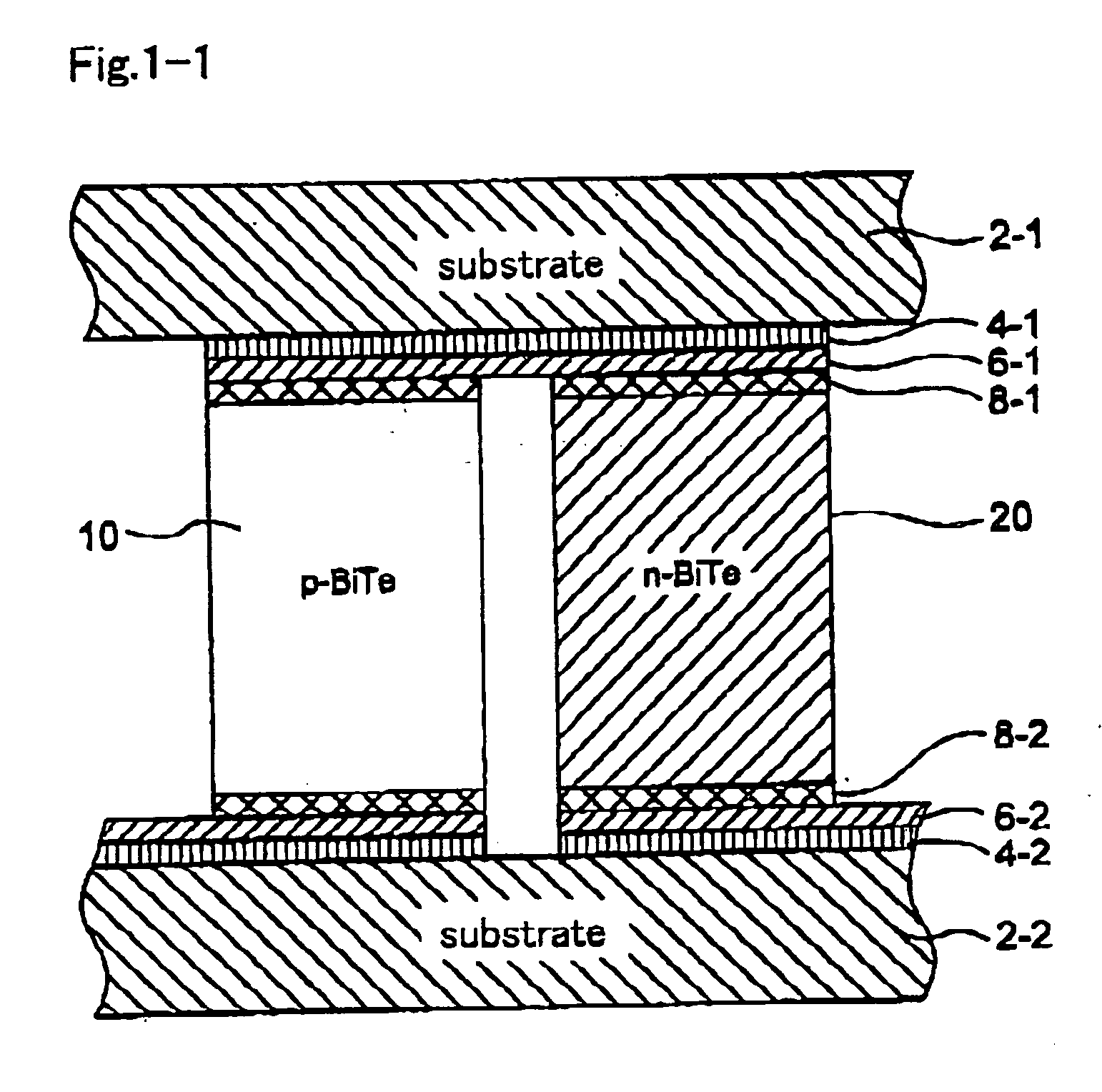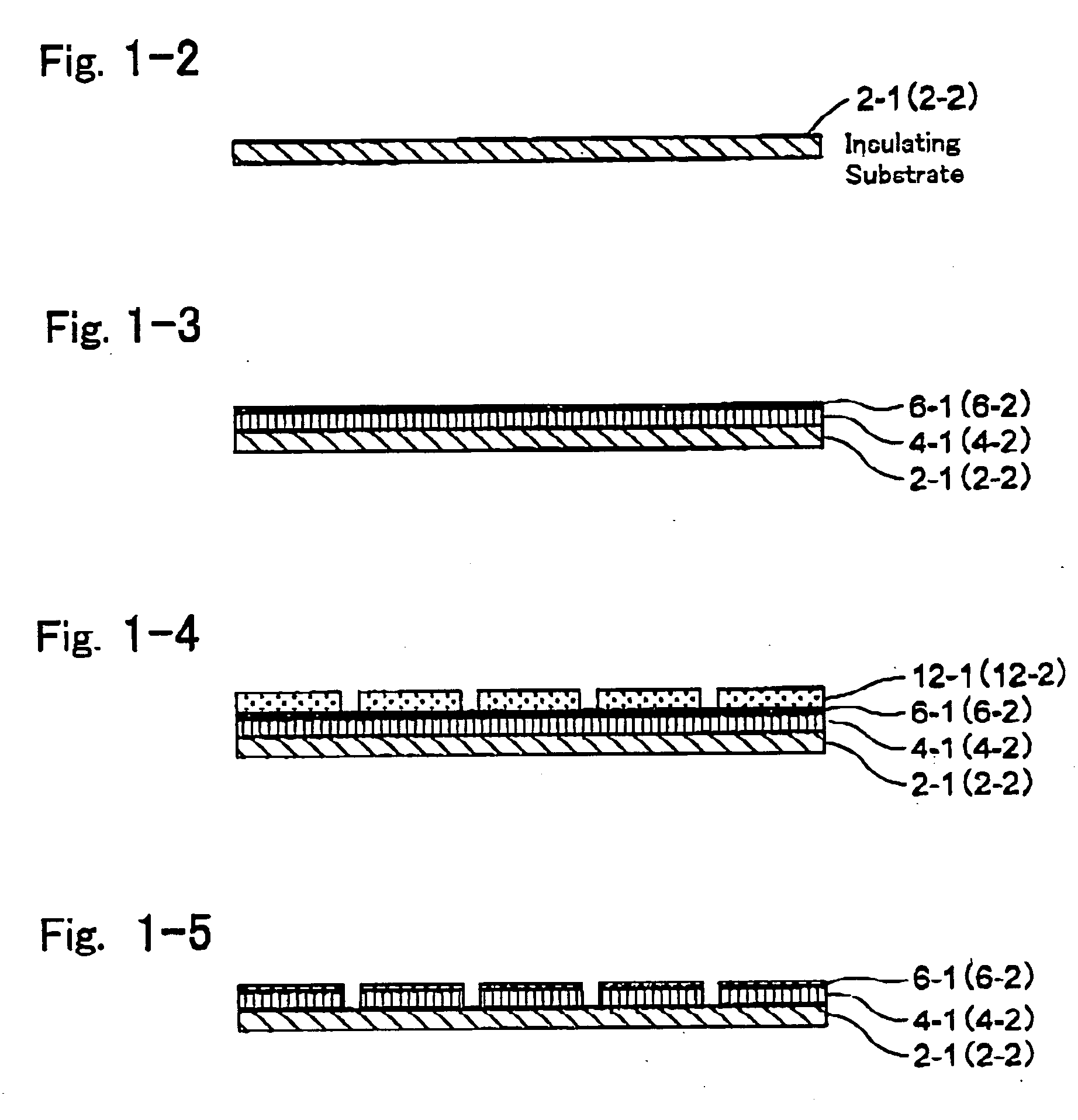Thermoelectric module and a method of manufacturing the same
a technology of thermoelectric modules and manufacturing methods, applied in the manufacture/treatment of thermoelectric devices, thermoelectric device junction materials, electrical apparatuses, etc., can solve the problems of short circuit, inability to reduce the arbitrary shape of p-type and n-type thermoelectric elements, and the possibility of becoming a barrier for narrow pitch and high density mounting and module miniaturization
- Summary
- Abstract
- Description
- Claims
- Application Information
AI Technical Summary
Benefits of technology
Problems solved by technology
Method used
Image
Examples
Embodiment Construction
[0297] Referring to the drawings, the embodiments of the invention will be described below, however the present invention is not limited to those embodiments described below but also includes any embodiments which a person skilled in the art may come to think by combination of the embodiments described here.
[0298] Hereinafter, referring to FIG. 1-1 through FIG. 1-15, the embodiments of the invention will be described.
[0299]FIG. 1-1 shows a schematic cross sectional view of the thermoelectric element in accordance with the invention. The P-type semiconductor 10 and the N-type semiconductor 20 are placed between the top side substrate 2-1 and the bottom side substrate 2-2 and connected to the electric circuit metal layer 4-1 via a blast stopper layer 6-1 which will be detailed later, and the P-type semiconductor 10 in the left side in the drawing is connected to the N-type semiconductor 20 in the right side, similarly the N-type semiconductor in the right side is connected further t...
PUM
 Login to View More
Login to View More Abstract
Description
Claims
Application Information
 Login to View More
Login to View More - R&D
- Intellectual Property
- Life Sciences
- Materials
- Tech Scout
- Unparalleled Data Quality
- Higher Quality Content
- 60% Fewer Hallucinations
Browse by: Latest US Patents, China's latest patents, Technical Efficacy Thesaurus, Application Domain, Technology Topic, Popular Technical Reports.
© 2025 PatSnap. All rights reserved.Legal|Privacy policy|Modern Slavery Act Transparency Statement|Sitemap|About US| Contact US: help@patsnap.com



